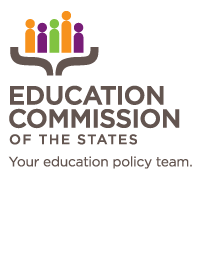This guest blog post comes from Wayne A. Taliaferro, policy analyst, Center for Postsecondary and Economic Success at the Center for Law and Social Policy.
State investments in higher education struggle to keep up with the growing needs of an increasingly diverse population of students. Central to that growing diversity is the emergence of a new majority in higher education: adult students. While state appropriators and state-funded financial aid programs have been called upon to better support this group of students, trends in income disparities, parental status and basic needs security clearly show that states must take a more strategic approach to investing in support for these students’ postsecondary success. At a time of constrained state budgets, it is important that policymakers leverage and distribute existing resources in ways that reach the students who need that support the most.
In Arkansas, state higher education leaders are doing just that.
In 2005, Arkansas began its Career Pathways Initiative, a cross-system model to fund tuition and non-tuition related expenses for low-income, educationally underprepared parents. CPI leverages federal Temporary Assistance for Needy Families (TANF) dollars through the state’s community college system and enlists support from other state agencies to ensure students have access to resources like transportation, child care, and other non-tuition expenses. In addition, CPI is not just a funding stream, but a mission-driven initiative. The program requires that a culture of student success be embedded within institutions, and to help achieve that, CPI students are paired with a counselor who helps them navigate their academic pursuits and non-academic needs throughout their course of study. The model is built on the career pathways principle of meeting students where they are, providing training that is practical and ensuring that training can lead to further education and career options. The model has been a success, and the results are notable:
- CPI student graduation rates outpace those of all Arkansas community college students.
- Postgraduate earnings for CPI students are above those of other TANF recipients, and just below non-CPI community college graduates.
- For every dollar invested in CPI, the state receives a return of $1.79 through growth in the tax base and decreases in public spending that result from increased economic participation of graduates.
Mike Leach, director of the Center for Student Success at Arkansas Community Colleges, has seen the impact of CPI. He told me: “CPI students graduate at twice the rate of our non-CPI students, despite CPI students facing many more barriers to completion. As part of an ongoing independent evaluation of CPI, called College Count$, graduates of CPI described over and over again how the personal counseling and personalized support services helped them overcome a host of barriers to staying in school and completing their studies. The financial supports were critical as well.”
The success of CPI is indeed laudable. However, the state’s recent move to cut need-based state aid for adults to support the state’s new Promise program may be incongruent with this progress. Although the Promise program is commendable in many respects, the needs of low-income adult students are less central to this program’s mission; and reducing their access to available state resources could potentially be an unfair trade-off that is antithetical to the mission of increasing attainment and bolstering economic mobility. Data are not yet available on what kinds of students are accessing the new program, so only time will tell. Nonetheless, CPI certainly provides a strong blueprint for what works, and building on that type of evidence is critical for moving the needle on student success.
The ongoing work in Arkansas provides clear evidence that state systems and resources work best when they are targeted to those who need them the most. Increasing equity strengthens attainment, bolsters socioeconomic mobility and boosts state economies. States should build on this approach and remain cautious about the consequences of decisions that disrupt progress toward these outcomes.




